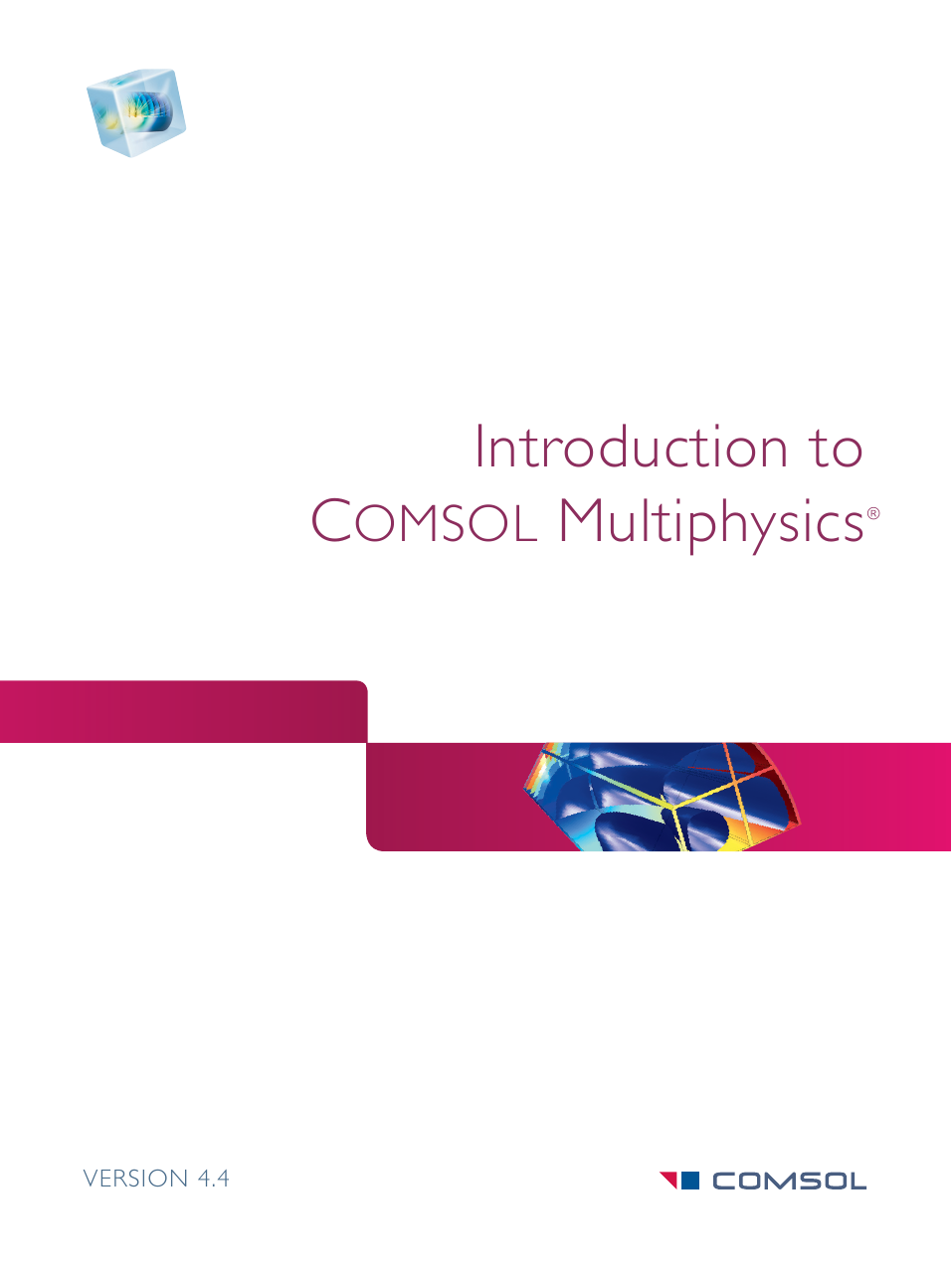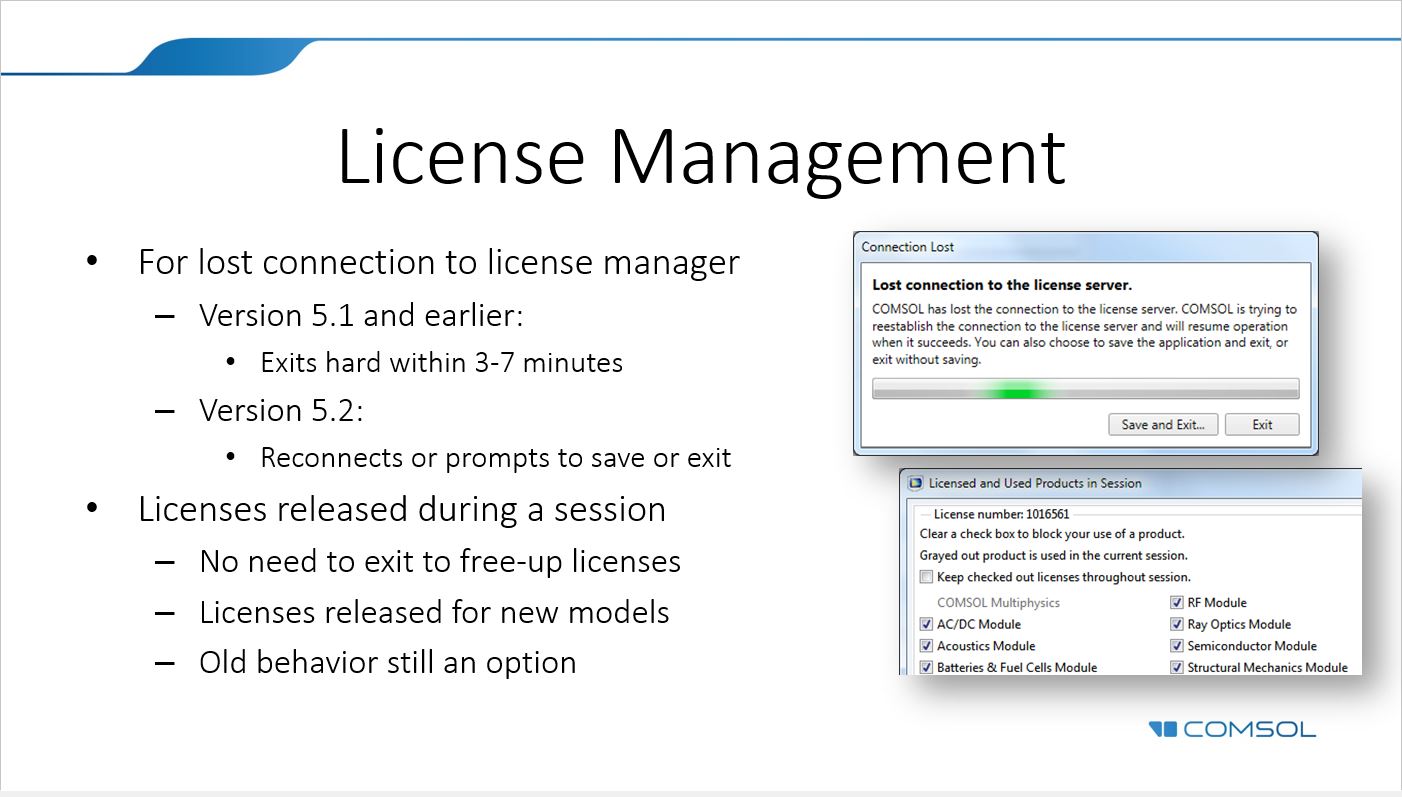

Another through example is available on pages 12-16 Cheng, Kuehlert, Panchap, and Young (2015). See page 21 of Eagle, Wadsworth, and Wnorowski (2015) for an excellent example of this type of sensitivity analysis, tables presenting their results are included below. By presenting the percent change in your calculated values for each of the input values of the swept parameter, you can assess how sensitive the entire model is to your chosen parameter. An easy way to choose this values is to increase and decrease your literature values by a fixed percentage, for example ☑0%. To execute this sensitivity analysis for a chosen parameter, use the parametric sweep to compute solutions using multiple values for your parameter.

#CAN I RUN COMSOL 5.1 FILE AT COMSOL 5.2 HOW TO#
The following video demonstrates how to implement a simple parametric sweep, which can be used for basic sensitivity analysis. Since the plot lacks an axis for mesh element number, it may be hard to verify that there is a trend towards convergence with higher numbers of mesh elements.īarsoum, Kureshi, Lee, and Pacifici (2016)ĥ.4 Estimating uncertainty and relating to design: performing sensitivity analysis Video tutorial

However, it can be more difficult to interpret the results of this type of plot. This option captures more data about spatial variation of your value of interest, allowing you to better assess how the mesh is converging across your entire model. In either case, the decision about what element number yields a convergence is subjective and other factors (often computation time) will play into the selection of which mesh size to use in the final solver.Īnother option is to plot data from cut lines as seen on Pages 17-20 of Barsoum, Kureshi, Lee, and Pacifici (2016). While Ernst, Gainey, Jusuf, and Li (2016) show a plot that looks close to ideal, many plots will continue to show small amount of variation even at high mesh element numbers (as seen in Azar, Elacqua, Peñaranda, and Stone (2016)). In each case, the authors choose a mesh size where their observed value appears to no longer vary with changes in mesh element number. Azar, Elacqua, Peñaranda, and Stone (2016) Ernst, Gainey, Jusuf, and Li (2016) This method can be seen on of Ernst, Gainey, Jusuf, and Li (2016) and on Pages 9-10 of Azar, Elacqua, Peñaranda, and Stone (2016). One option (shown in Figure 5.4) is to use a cut point to extract data at a specific point at a single time (often the final time point) and plot that value vs number of mesh elements. Mesh convergence data can be presented and analyzed using a variety of plots and techniques. Note that the video only demonstrates plotting Temperature vs Time for different meshes. The video below demonstrates how to use a parametric sweep to perform a mesh convergence. Carroll, Connolly, Hearn, Kaitlin, and Imran (2017) 5.3 Reducing discretization error: mesh convergence Video tutorial To validate their model, they compare a 2D contour map of calculated mass fractions to an experimental photograph of the dissolving tablet. For example, Carroll, Connolly, Hearn, and Imran (2017) model the physical degradation of a tablet, yielding data about the density (mass fraction) across the entire tablet. If your model generates data that isn’t numerical or you reference non numerical experimental data, there are other options. While COMSOL’s graphing interface is ideal for comparing numerical results, in some situations your results may not be easy to compare with graphs. The video below demonstrates how to import reference data into COMSOL to compare with your calculated values.įor an example of implementing and presenting an experimental data comparison as shown in the video, see pages 19-21 of Eagle, Wadsworth, Wnorowski (2015). 4 5.5 Objective functions: simple optimizationĥ.2 Estimating error: validation of the model Video tutorial.



 0 kommentar(er)
0 kommentar(er)
